Animal Crossing (the Road In Front of Us)
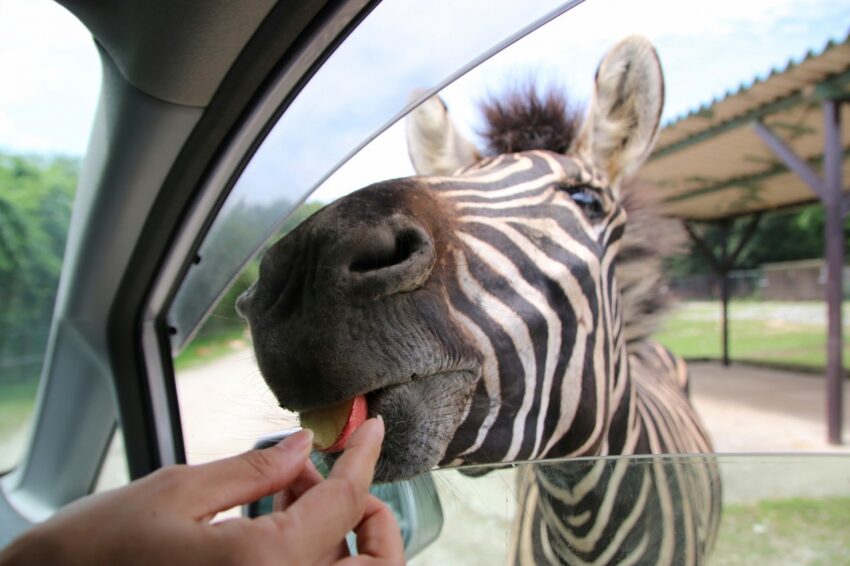
Of the many things one might expect to see in Japan, a giraffe grazing in front of Mount Fuji might not be very high on the list. But indeed, you can see such a sight from the safety and comfort of your own car. Or a rented one. Or a heavily-reinforced tour bus that itself looks like an animal. Because you’re about to step (or well, drive) into the world of the safari park.
Japan has many zoos. And some very good ones, like the Kobe Oji Zoo or the sprawling Ueno Zoo in Tokyo. Animals in them range from the exotic to the mundane. I’ve never seen a white tiger or spotted hyena anywhere else so close befoire. On the other hand, a Squirrel House might seem strange and exciting to some, but to a surburbanite Bostonian, it feels more like a backyard. I’ll never forget seeing a regular old New England seagull along with other aquatic birds at the Kobe Oji Zoo. You’d be forgiven for thinking he had just snuck in there, scouring the premises for any unattended potato chip bags. But no, he was there by design, no doubt benefitting from all the scrumptious morsels that the space gods (or the zookeepers) can provide.
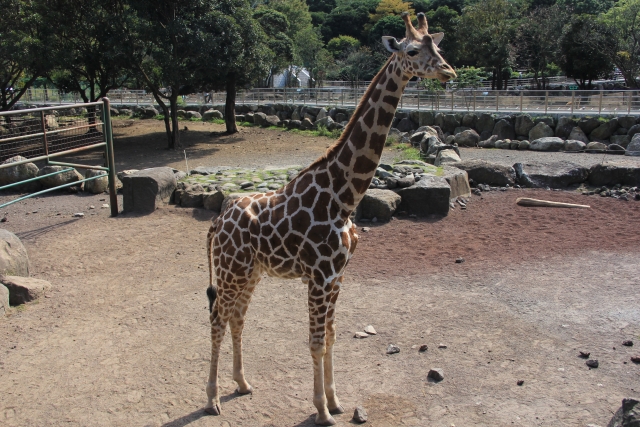
Photo by acworks
But a safari park is something else. More than just a zoo, it’s an experience. And, crucially, it’s a place where the animals roam (mostly) free, and it is us humans that are confined to slow-moving air-conditioned cages. Just as nature intended! Japan has several such parks, but one of the largest and most beloved is Fuji Safari Park.
And why not? A chance to see lions, tigers, bears, giraffes, cheetahs, elephants, rhinoceroses, zebras and bison with Japan’s highest peak filling the sky? There are several ways it can be experienced, though the tour bus is most recommended. You can even have a chance to feed the animals (with park-approved rations of course). If you’re taking your own vehicle (or a rented one) be sure to follow all the rules. Drive slowly and carefully- the last thing you want is hurting the animals. Or having an elephant crush your 2001 Pontiac Aztek with you in it.
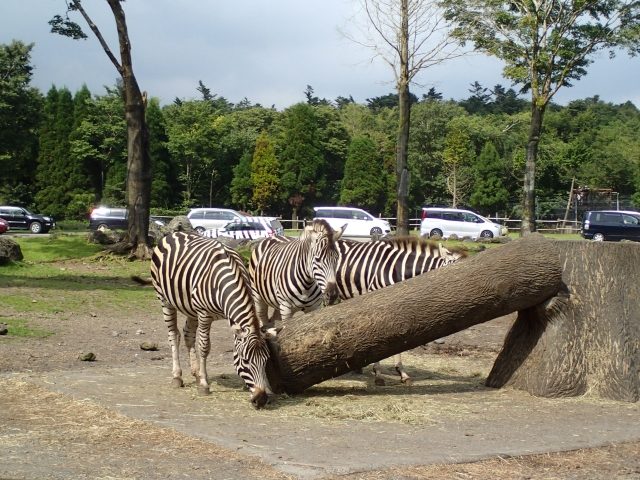
Photo by namako88
And if you need a break from lions, tigers and bears, there are areas with more agreeable members of the animal kingdom. Frolic among the capybara, bunnies or guinea pigs. See the ponies, llamas and goats. Take some time to pet that friendly sheep- any self-respecting zoo has a ふれあいゾーン or petting area. When I finally shuffle off this mortal coil some day, I am definitely reincarnating to come back as a petting zoo alpaca.
The Fuji Safari Park is located on the southern slopes of Mount Fuji and is connected to nearby train stations by bus. The most frequent route connects the park to/from Gotemba Station every two hours. Buses to/from Mishima and Fuji stations exist but are less frequent. Alternatively, a rental car is recommended to simplify access and use of the safari park. Rental outlets are available around most major railway stations in the area, including Mishima and Gotemba stations. Now that all the technical jargon is out of the way, here is a big honking camel crossing the road:
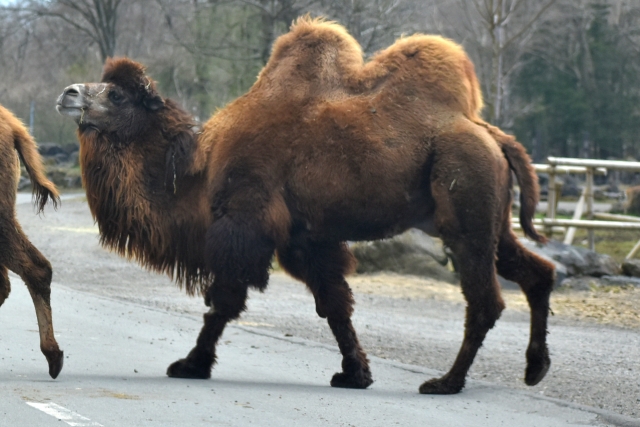
Photo by premium-AC
There are of course other safari parks around Japan. Gunma and Tochigi have great ones as well. Check them out! Check out an alpaca ranch too. Not because it’s a safari park, but because alpacas are cool.
But perhaps you lucky enough to come from a part of the world where animals such as bison, giraffes or gigantic man-eating cats are natives. Well, you too can come to Japan as an ALT some day and see them here. Why? Well, why not?
For those attending the SAGEA Virtual Grad Expo on August 17th, we’ll be there from 10 am to 3 pm SAST. We hope to see you there!
https://sagea.org.za/all-events/virtualgradexpo-2023-3/
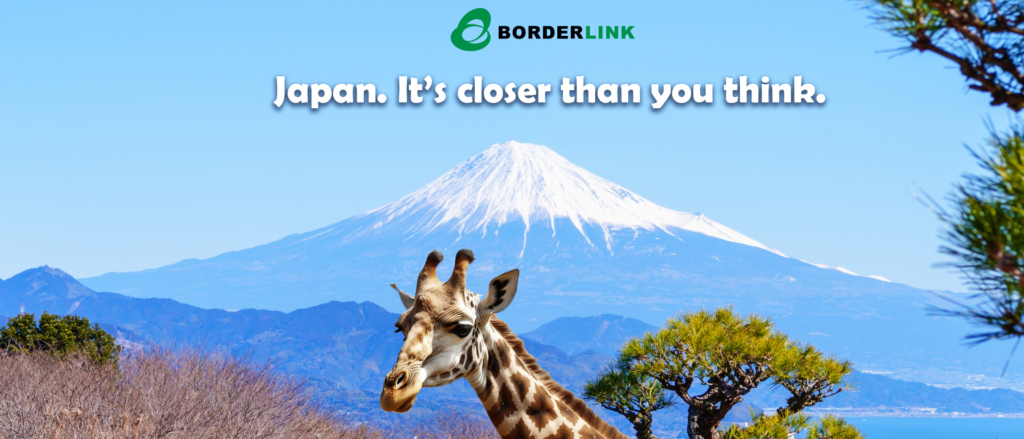
Photo Credits:
Additional images by acworks namako88 and premium-AC
All other content (text) created by the original author and © 2023 MUSUBI by Borderlink
RELATED
-
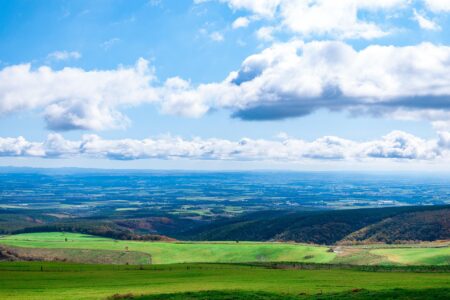
6 Treasures in Hokkaido
Hokkaido, Japan’s very own ‘Last Frontier’, is a place with much to discover. You have to do… -

An Island of Fish Fests!
Top Photo: cheetahさん on PhotoAC What do we think of when we think of Japanese cuisine? Healthy? Sure. Sushi? Y… -

Announcing: Our First Japanese Speech Contest
【参加者募集!「第一回 にほんごスピーチコンテスト」開催のお知らせ】 *English follows Japanese. この度、ボーダーリンク主催の日本語スピーチコンテストを初開催します! この機会に、皆さんの思いを…
PEOPLE

JP Navillus
From the US
A zoo enthusiast and animal lover who has spent almost 20 cumulative years in Japan.


